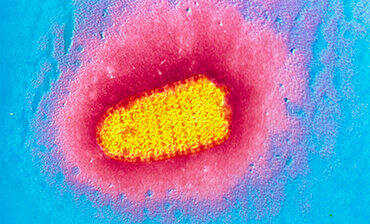Rabies

Rabies is a fatal disease that is transmitted to humans when an infected animal bites or scratches a person.
In humans, the average incubation period is typically two to three months but can be much longer. Initial symptoms include:
- Headache
- Fever
- numbness of the skin where the bite or scratch has occurred
As the disease progresses, neurological symptoms develop leading, in the vast majority of the cases, to the death of the person.
Key facts
How it spreads
Transmission occurs when an infected animal bites or scratch a person, or generally when a person comes into contact with the saliva of an animal that has the disease.
Vaccination and treatment
There is an effective vaccine against rabies. It is also used after someone has been exposed to the virus, to limit the chances to develop the disease. In that case, the vaccine should be administered as soon as possible after exposure.
There is no treatment against rabies once the disease has started.
Protective measures for animals
In addition to human vaccination, there is also preventive vaccination of domestic dogs and cats, and wild animals such as foxes; oral vaccination has been shown to be effective in preventing the spread of the disease among wild animal populations.




